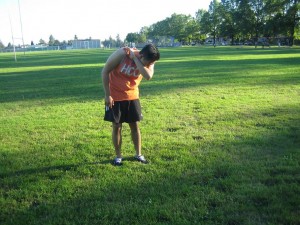Ingrown eyelashes are also known as trichiasis. An ingrown eyelash happens when one of the lashes starts to develop in an internal direction in the area around the eye. It will cause swelling of the follicles of hair or eye blister that sometimes result to loss of vision. It causes obstruction and irritation of vision as the eyelashes rub against the eye. A person can be affected by ingrown eyelashes since birth or happens later in life. It can be caused by infections in the eye, herpes in eye, burns, and traumatic injury.
Causes
- Inflammatory diseases of the eyelids like chronic blepharitis can damage the eyelids and eventually cause the eyelids to turn inwards towards the eyes.
- Older people are prone to this condition but can also happen at any age. Children suffering from congenital eye problems are also prone to develop ingrown eyelashes.
- Injuries to the eye and eyelids can result to ingrown eyelash.
- Distichiasis is an eyelid disease which is characterized by the development of two rows of eyelashes where one row grows inwards.
- Epiblepharon which is a congenital disorder which also cause ingrown eyelashes and it also affects the muscles found around the eye.
Symptoms

- There is a feeling of foreign particles, sand or grit in the eyes that can result to watering and irritation of the affected area.
- Pain and redness in the eyes
- Constant irritation in the eyes due to frequent contact of the lashes in the eyes.
- Infections in the eyes
- Ingrown eyelash causes dryness in the eyes
If the ingrown eyelashes are not properly treated, it will result to abrasion and ulceration of the cornea and increase the risk of vision loss.
Treatment
- Apply a warm compress on the affected eyes. Soak a small piece of towel in warm water and then place it on the affected eye for at least 10-15 minutes for 3-4 times every day. Avoid using very hot water in order to prevent damaging the nerve.
- Rinse the eyelid carefully using warm water in order to open the pores. An ingrown hair happens when the hair begins to curl back within the follicle rather growing out on the skin. A protein will clog the pore that will result to swelling and inflammation. By rinsing the affected area with warm water, it helps move the blockage out into the surface of the skin.
- Apply gentle pressure on the blockage using the finger. Since the blockage is found in the delicate part of the eyelid. Avoid pulling away the lid from the eye but simply apply more gentle pressure on the area and if the blockage cannot be removed, seek medical help immediately
